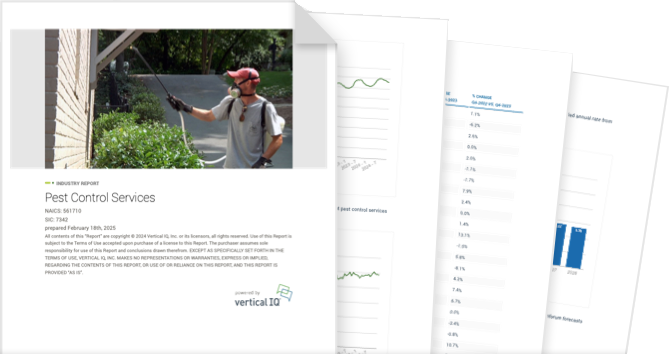Commercial Building Contractors NAICS 2362

Unlock access to the full platform with more than 900 industry reports and local economic insights.
Get access to this Industry Profile including 18+ chapters and more than 50 pages of industry research.
Industry Summary
The 40,344 Commercial building contractors in the US coordinate resources and manage the building process for industrial, commercial, and institutional projects. About 72% of contractors are sole proprietors or entities without workers on payroll. Most commercial building contractors rely heavily on subcontractors.
Dependence on Subcontractors
Commercial building contractors are dependent on subcontractors for specialized activities, such as electrical, plumbing, or mechanical work.
Competitive Pricing Environment
Most commercial construction jobs are competitive bidding situations, and price is a major deciding factor in which commercial contractor obtains the job.
Recent Developments
Dec 4, 2025 - Nonresidential Building Construction Starts Improve
- Nonresidential building construction starts increased 17.9% in October compared to the previous month, according to Dodge Construction Network. Commercial starts rose 19.5%, led by data centers (+45.5%) and retail stores (+15.1%). Office construction starts also improved, but starts were lower for hotels (-19.3%), warehouses (-1.7%), and parking garages (-46.1%). Institutional starts grew 3.7% due to project categories other than education and healthcare, which saw starts fall 20.8% and 2.7%, respectively. Manufacturing starts jumped 107.2% in October compared to September, but the sector remains volatile from month to month. Nonresidential building starts were up 5.6% for the first 10 months of 2025 compared to the same period in 2024. On a year-to-date basis, commercial and industrial starts increased 13.6%, while institutional starts fell 2.2%.
- Walmart and other retailers will partner with 3D-printing firm Alquist to deliver more than a dozen construction projects across the US, marking a shift from pilot programs to full-scale commercialization of 3D concrete printing, according to Construction Dive. To meet demand, Alquist will collaborate with contractor FMGI and equipment rental dealer Hugg & Hall, with FMGI leasing Alquist’s A1X printers to execute large-scale projects nationwide. The first job under this model is scheduled to begin in December at Walmart’s Lamar, Missouri, location, following earlier store expansions in Tennessee and Alabama. Alquist’s robotic systems promise faster mobilization, cleaner sites, and consistent quality, while FMGI says AI-trained robots can operate around the clock with minimal human oversight. The partnership highlights growing confidence in 3D printing as a sustainable, efficient alternative to traditional construction methods, potentially transforming how retailers and contractors approach large-scale building projects.
- North American construction and engineering spending in 2025 is expected to decline 1% after increasing an estimated 6% in 2024, according to FMI’s fourth-quarter 2025 North American Engineering and Construction Outlook. Commercial construction spending is forecast to decline by 9% in 2025 as retail store closures surpass openings for the first time in a decade and warehouse vacancies remain high. Lodging construction is expected to decline by 2% in 2025, amid sluggish business travel growth and as financing conditions and maturing debt pose headwinds. High vacancy rates will also keep office construction spending growth to 1% in 2025. Federal funding cuts are projected to result in a 1% decline in educational construction in 2025, while healthcare projects are expected to see a 1% increase in spending.
- During a webinar in October, Associated Builders and Contractors (ABC) chief economist Anirban Basu warned of tightening conditions for the U.S. construction industry, with rising interest rates, material costs, and financing challenges threatening project viability, according to Construction Dive. While data center construction remains strong, driven by investments in AI infrastructure, other sectors, such as commercial, manufacturing, and public infrastructure, are cooling due to tariffs, saturated markets, and dwindling government funding. Contractors outside the data center space report shrinking backlogs and reduced deal flow. The expiration of federal infrastructure funding in 2026 may further dampen demand.
Industry Revenue
Commercial Building Contractors

Industry Structure
Industry size & Structure
A typical commercial building contractor employs about 23 workers and generates $15.4 million annually.
- The commercial building contracting industry consists of 40,344 companies that employ 910,500 workers and generate $619.7 billion annually.
- About 72% of contractors are sole proprietors or entities without workers on payroll.
- Most commercial building contractors rely heavily on subcontractors.
- Large companies include Turner Corporation, Tutor Perini, Jacobs Engineering, and Gilbane Building Company.
Industry Forecast
Industry Forecast
Commercial Building Contractors Industry Growth

Vertical IQ Industry Report
For anyone actively digging deeper into a specific industry.
50+ pages of timely industry insights
18+ chapters
PDF delivered to your inbox
